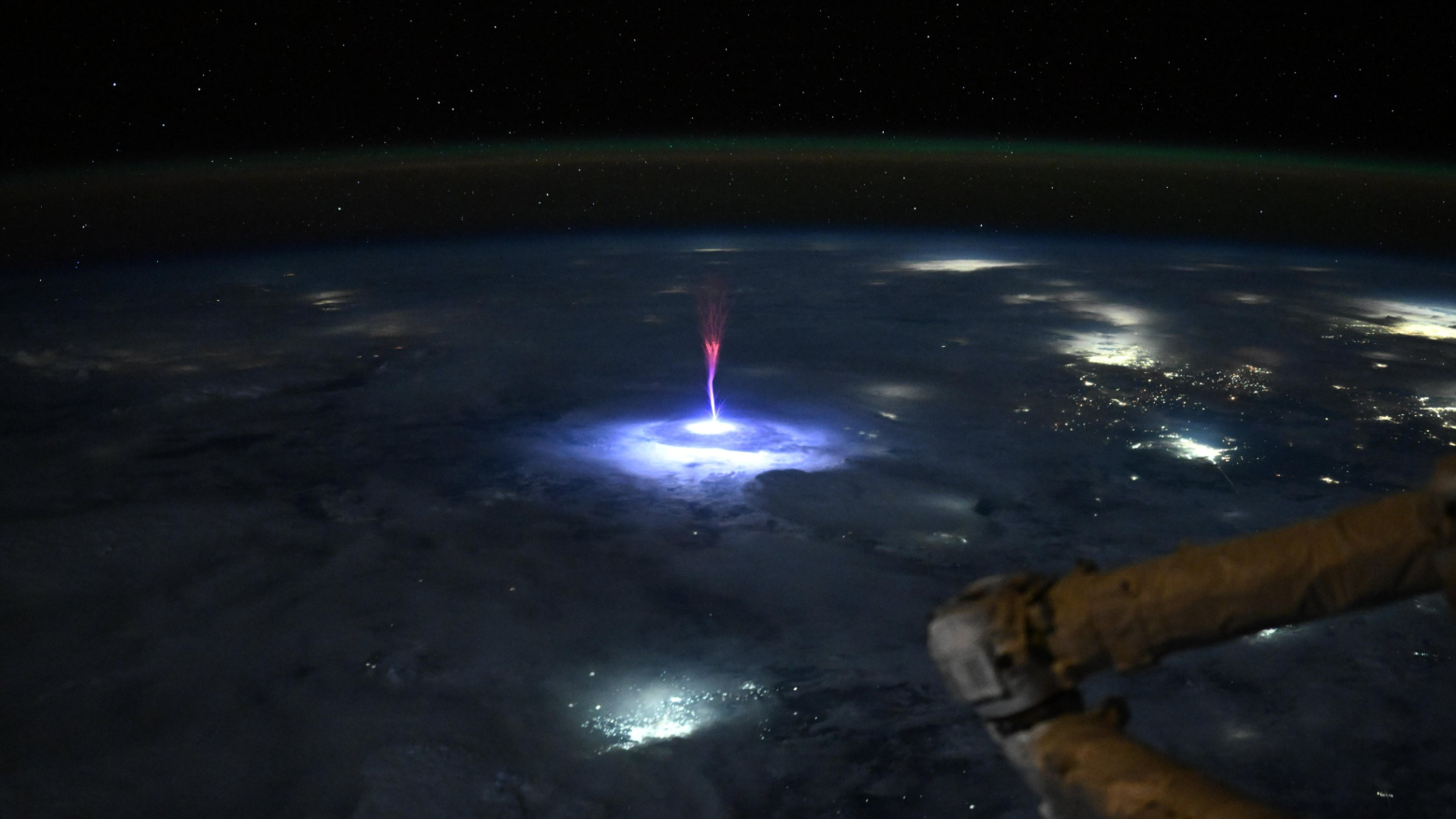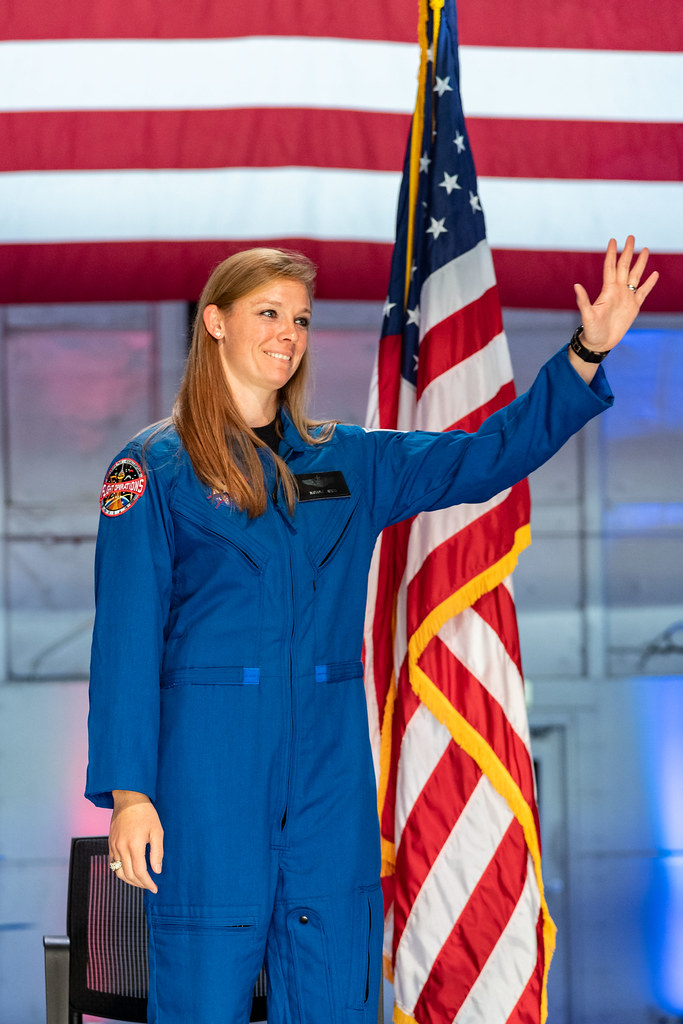A Rare Red Sprite Captured from the ISS Lights Up the Skies Over the United States
Early on July 3, 2025, something extraordinary happened above the stormy skies of Mexico and the southern United States. NASA astronaut Nichole “Vapor” Ayers, currently aboard the International Space Station (ISS), captured a stunning photograph of a massive red sprite—a rare burst of upper-atmospheric electricity—flashing above a thunderstorm. This fleeting phenomenon, which lasted only a few milliseconds, revealed crimson tendrils reaching into space, illuminating the night with an otherworldly glow.
What Are Red Sprites?

Sprites are a type of Transient Luminous Event (TLE), occurring in the mesosphere at altitudes between 50–90 kilometers (31–56 miles) above the Earth’s surface. They are triggered by powerful lightning strikes far below, sending brief, jellyfish-shaped bursts of reddish light upward into the atmosphere.
Unlike typical lightning that we see streaking down toward the ground, sprites travel in the opposite direction, appearing as crimson columns and branching filaments that can stretch for tens of kilometers across the sky. Their red color comes from nitrogen molecules in the upper atmosphere being ionized by the electrical energy of the storm.
Sprites are incredibly brief and elusive, making them difficult to observe from the ground. The vantage point of the ISS, orbiting around 400 kilometers above Earth, offers a unique perspective for capturing these rare events.
A Moment of Wonder Captured by the ISS

As the ISS passed over Mexico and the southern United States, Ayers noticed a bright red flash above a thunderstorm system and quickly captured the moment. The photograph shows the sprite’s intricate, branching structure, with thin tendrils extending high into the mesosphere.
Sharing the image on social media, Ayers wrote:
“Just. Wow. As we went over Mexico and the U.S. this morning, I caught this sprite. Seeing Earth’s storms from above is breathtaking, but catching a sprite is something I will never forget.”
The image has since gone viral, with millions of views across platforms, leaving many awestruck by the hidden beauty of Earth’s upper atmosphere.
Why This Matters: NASA’s Spritacular Project

This rare sprite sighting contributes to NASA’s Spritacular project, an initiative that encourages both professional scientists and citizen scientists to capture and report sightings of TLEs. These observations are helping researchers study how electrical storms affect the upper atmosphere, improving our understanding of the complex interactions between weather systems and the near-space environment.
Sprites, along with other TLEs like blue jets and elves, are important to study because they influence the global electric circuit and could impact communication and navigation systems. By analyzing images like the one captured by Ayers, scientists can gather valuable data on the conditions that give rise to these phenomena and better understand their role in Earth’s atmospheric processes.
The Beauty of Science Above Earth

Beyond their scientific value, sprites are a reminder of the hidden wonders of our planet. They are a rare glimpse of the dynamic interactions happening in the skies above us, invisible to most people on the ground. As technology advances and our presence in space expands, the opportunity to observe and study these fleeting moments continues to grow.
Seeing a sprite from the ISS is a powerful example of how exploration and science intersect, allowing us to witness phenomena that were once only the stuff of legend. For many who have seen Ayers’ photograph, it serves as a reminder that Earth’s beauty extends far beyond what we see every day, into realms that are still filled with mystery and wonder.
While storms below may be chaotic and dangerous, above them, the skies sometimes light up with a silent, beautiful dance of red tendrils reaching toward space. Thanks to the unique vantage point of the ISS and the keen eye of astronauts like Nichole Ayers, we get to witness these breathtaking moments, reminding us of how much there still is to discover about the world we live in.
If you ever needed a reason to look up, this is it.




